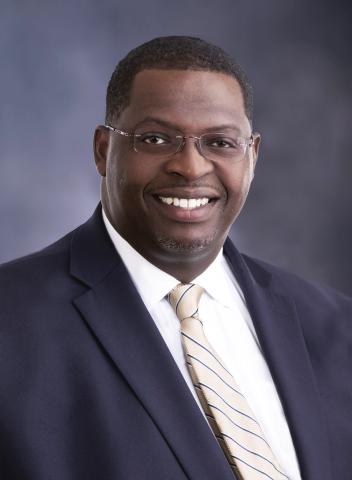
February 19, 2025 - Springfield, CTPF Executive Director Carlton W. Lenoir, Sr., testified before the Illinois Senate Pension Committee, chaired by Robert F. Martwick (D), on February 19, 2025. He discussed CTPF's funding history, legislative priorities for 2025, and the Tier 2 Safe Harbor requirements.
“I want to thank Chair Martwick and the Committee members for making the time for this important subject matter hearing,” remarked Executive Director Lenoir. “Educating Illinois lawmakers about the mistakes of the past so that they cannot be repeated is a critical element in our legislative strategy and we appreciate this opportunity.”
During his testimony, Lenoir called attention to the fact that CTPF’s funding ratio has fallen from 100.8% in 1999 to 48.1% in 2025, primarily due to a lack of revenue. Before 1995, CTPF received its primary funding from a tax levy. A funding crisis at the Chicago Public Schools in the mid-1990s resulted in an agreement that fundamentally changed the structure of pension funding when legislation redirected the tax levy for pensions into the CPS operating budget.
From 1996 through 2005 CPS did not contribute to CTPF, a loss of nearly $2 billion in revenue. When funding fell and payments were required, CPS received additional relief in the form of reduced payments from 2011 to 2013, resulting in an additional loss of $1.2 billion. Lacking stable sources of revenue, CTPF liquidated assets and relied on investment earnings to pay pension obligations.
Improvements began when legislation signed in 2016 (Public Act 99-521) reestablished the CTPF tax levy, and additional legislation signed on August 31, 2017, (Public Act 100-465), reformed the Illinois education funding formula, established the State's obligation to fund the normal cost of Chicago’s teacher pensions, and provided funding to offset the cost of retiree health insurance.
The testimony also highlighted CTPF’s core legislative priorities for 2025:
SB 1188 Penalty Reduction Amendment for retirees who return to work.
SB 1893 PEN CD- CTPF Annual Health Insurance funding increase
SB 1934 PEN-CD Tier 2 Survivor Benefit calculation clarification.
Read more about CTPF’s legislative priorities here.
Lenoir also explained CTPF’s Tier 2 Safe Harbor issue. CTPF is currently a Social Security replacement plan, which means members only participate in the CTPF plan, as long as the Fund offers a benefit equal to or better than Social Security. Tier 2 members, whose pensionable salary is capped at an amount less than the Social Security Wage base may receive a benefit that would be less than social security's.
“While we currently meet Safe Harbor requirements,” said Lenoir. “We know that unless action is taken our plan will fail the Safe Harbor test in the next few years – or even sooner. That failure is costly, as members would have to pay into both the CTPF system and be enrolled in Social Security.”
CTPF’s actuarial analysis determined that raising the Tier 2 compensation limit to 90.5% of Social Security Taxable Wage Base (or greater), would resolve the issue for Tier 2 members.